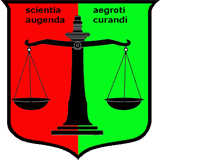EUTwinsS: Twins with SchizophreniaInstitute for Response-Genetics, University of ZurichHead: Prof. Dr. Hans H. Stassen |

|


Partners:
|
Brain Wave Patterns (EEG)In an EEG study of 91 healthy subjects with repeated assessments, 40 pairs of healthy MZ twins, 27 pairs of MZ twins discordant for schizophrenia, and 13 pairs of MZ twins concordant for schizophrenia, we investigated (1) the trait quality of brain-wave patterns with respect to inter-individual differences, intra-individual stability over time, and within-pair MZ concordance, (2) the characteristics of brain-wave patterns that allow one to discriminate reliably between affected and unaffected individuals, and (3) the characteristics of brain-wave patterns that reflect the severity of illness. Most parameters chosen to quantify brain-wave characteristics were found to possess distinct trait-like qualities, as indicated by large inter-individual differences, great stability over time, and high within-pair concordances in healthy MZ twins. Non-Genetic Pathologic Brain DevelopmentsIn comparison to healthy controls, MZ twins discordant and concordant for schizophrenia exhibited a much lower within-pair EEG concordance, although the majority of correlation coefficients differed significantly from zero. Accordingly, abnormalities of brain-wave patterns associated with schizophrenia and differently manifested in MZ co-twins concordant for schizophrenia seem to reflect non-genetic, idiosynchratic pathologic developments of genetically identical brains. These abnormalities allowed us to discriminate reproducibly between affected and unaffected individuals by means of a multivariate discriminant function with an overall accuracy of 80%. Severity of IllnessThe severity of illness, as derived from the brain-wave discriminant function, was closely related to the severity of illness provided by psychopathology scores and overall AXIS V social functioning. In consequence, the non-genetic, highly individual pathologic development of brain-wave patterns in schizophrenia clearly limit the usefulness of these quantities as biological markers for investigations into the genetic predisposition to this illness. |
|

Within-pair concordances of psychopathology syndrome scores in mz and dz twins where at least one co-twin suffers from schizophrenic disorders. No more than 55% of mz and 15% of dz co-twins are concordant for schizophrenia, thus displaying significant deviations from the mz:dz ratio of 2:1.
Detailed analyses of our family data showed that: (1) patients with a clinical diagnosis of
schizoaffective disorders have the highest genetic vulnerability; (2) the gentic vulnerability
is not constant but depends on the age of onset and the severity of psychopathology scores;
(3) genetic vulnerability appears to be ethnicity-independent.
|
|
| [ Mail to Webmaster ] k454910@ifrg.ch |